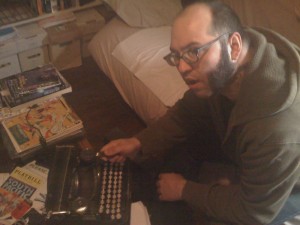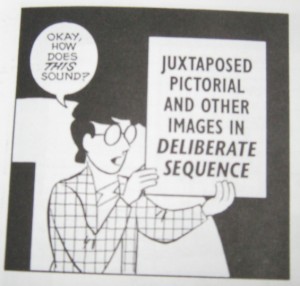Due to injuries sustained during a month long blogfest, Matt. Murray is currently on the SAC Blog’s disabled list. He hopes to quickly ascend the ranks of the injured reserves with a fresh onslaught of insights and snarky comments about comics and cartoons. This week, Jared Gniewek will graciously be delivering a double dose of Die by the Pen…

As someone who is recently unemployed, it is doubly important for me to adhere to a work ethic regarding my writing. I find that my gentleman’s library can be a touch distracting if I am in the middle of a piece and need to get out of the house to work. I found a coffee shop a mere fifty blocks away. It’s good to get out of the house and the walk keeps the brain gears greased. I find, sometimes, that stories are a very easy thing to come up with on a two and a half mile walk, but what becomes difficult is communicating their setting. I mainly write Horror, and it is very important to maintain setting. A reader has a very hard time accepting that the monsters are real when the characters are floating around an undefined place. One must know the barriers in Horror, so that these may be destroyed by the invading agent.
My latest inspiration is experimenting with world building exercises. It’s important that the characters you work on live in a breathing, vital world. No one lives in a vacuum – not even the most powerful wizard in the universe. Everyone is a part of their community (even an outsider is a reflection of our response to a pre-existing social network). We inhabit physical spaces; so should our characters. The town, country, planet, dimension, etc. should be hatched out at some point. In a lot of cases it won’t matter all that much that the story takes place in Utah or Burbank. But in quite a few stories the environment is so defined that it becomes an entity as strong as the characters themselves, such as in the setting of Tokyo in the works of Yoshihiro Tatsumi or the planets of Apocalypse and New Genesis in the works of Jack Kirby. Or, perhaps most famously, Hill House in the novel by Shirley Jackson.
Read more


